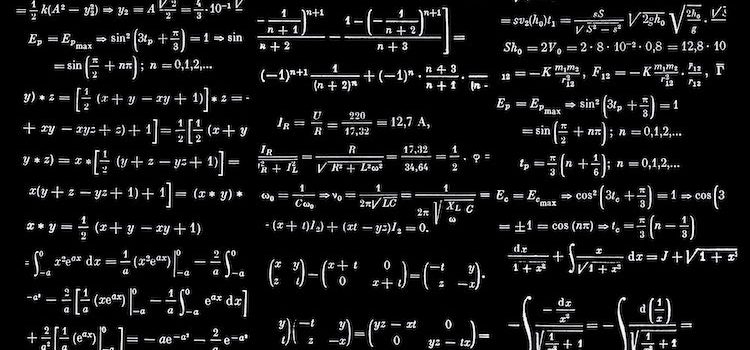

This article is an excerpt from the Shortform book guide to "A Brief History of Time" by Stephen Hawking. Shortform has the world's best summaries and analyses of books you should be reading.
Like this article? Sign up for a free trial here .
Where are scientists in their attempts to develop a unifying theory? Is string theory the answer?
Hawking asserts that the ultimate goal of science is to develop a “unifying theory” that can be applied in any context. Scientists have made progress towards this goal but have not yet achieved it. In the meantime, they use two major theories. Hawking discusses the limitations of each of these theories as well as some of the attempts to create a unified theory.
Read more to learn about a unifying theory in science.
Unifying Theory
Hawking asserts that the ultimate goal of science is to develop a “unifying theory” that can be applied in any context. Scientists have made progress towards this goal, but have not yet achieved it. Instead, scientists currently use two major theories: general relativity and quantum mechanics. Each of these theories makes accurate predictions when applied in its intended context, but the intended context of the two theories is very different. Additionally, if you try to apply both of them in one of the rare cases where their applicable context overlaps, you run into problems. Let’s discuss the limitations of each theory as well as some of the attempts to create a unified theory.
The Limitations of General Relativity
To accurately model the motion of objects as they approach the speed of light, Hawking says we must use the theory of general relativity. This theory works great for predicting the motion of stars, planets, and macroscopic (big enough to see without a microscope) objects in general. However, Hawking notes that relativity does not accurately model the behavior of subatomic particles. (The reason for this has to do with the nature of particles.) Instead, subatomic particles exhibit a variety of behaviors that can only be modeled using quantum mechanics.
The Limitations of Quantum Mechanics
As Hawking explains, quantum mechanics accurately models subatomic particles, but quantum mechanics doesn’t allow for modeling gravitational interactions or macroscopic objects. This is because the mass of subatomic particles is too small for scientists to measure their gravitational interactions. And you can’t simply add more particles to make them easier to measure, because, according to Hawking, the calculations quickly become prohibitively complex as the number of particles increases.
(Shortform note: Other authors tend to agree with Hawking that quantum mechanics can’t model gravity because the math is too complicated, but some offer different explanations for why this is the case. For example, astrophysicist Paul Sutter explains that, when calculating particle interactions in quantum mechanics, scientists assume that space is Euclidean [not curved] and is not affected by the particles. These calculations are already complicated, and if you instead assume that the mass of the particles causes space to curve [as general relativity predicts] then that adds a whole new dimension of complexity, making the math problem insoluble.)
Attempts to Unify Relativity and Quantum Mechanics
Hawking reports that no one has yet been able to come up with a theory that incorporates both quantum mechanics and general relativity.
He explains that part of the problem is that combining the equations from the two theories results in predictions that clearly contradict observations, such as gravity being infinitely strong everywhere. A theory called “supergravity” partially solved this problem by modeling particles differently, such that they were all variations of a “super-particle.” However, Hawking reports that the predictions of supergravity theory didn’t match observations of actual particles, and the mathematics of the theory were also too complicated to be practical.
According to Hawking, “string theory” is the most promising possibility for unifying quantum mechanics and general relativity. He explains that the premise of string theory is that all fundamental particles can be modeled as microscopic loops of one-dimensional “string” that vibrate in multiple directions. He notes that these “strings” would have to vibrate in ten or more dimensions to explain all the observed properties of particles, but that we only perceive four dimensions on a macroscopic scale (three spatial dimensions and one time dimension) because the other dimensions are curled up into tiny closed loops.
(Shortform note: Although there has been a great deal of work done on string theory and M-theory (which is a superset of string theory) since Hawking wrote A Brief History of Time, actual progress has been minimal. Many physicists still consider it the most promising approach to unifying general relativity with quantum mechanics, but a complete mathematical model has yet to be formulated. As such, there is no experimental evidence to support it, because you need a complete theory before you can use it to make testable predictions.)
| Is Thermodynamics the Unifying Theory? In 2011, Pharis E. Williams published a book on “Dynamic Theory,” which allegedly provides a simple yet powerful way to unify quantum mechanics and general relativity. The essence of Williams’s approach was to generalize the first and second laws of thermodynamics in five dimensions: three dimensions of space, one of time, and one of mass. In thermodynamics, there are methods for calculating how a system (such as a steam power plant) will respond to being jostled. Williams adapted these methods to provide a model of motion. Williams explains that if you apply his model to the special case where entropy is constant, then certain terms drop out, and it reduces to the equations of quantum mechanics. If you instead apply it to a different special case where mass density is conserved, different terms drop out, and it reduces to the equations of general relativity. If you don’t assume either special case and keep all the terms in Williams’s model, then it appears to provide a unifying theory that’s universally applicable. However, Williams’s theory has yet to be rigorously tested. Williams (who passed away in 2014) used his theory to make many predictions, but most of them have not been investigated experimentally. This may be partly because Williams was an outsider to the mainstream physics community (he worked mostly as an ordnance engineer for the US Navy), and thus lacked the professional connections to raise funding and support for experimental studies of his theory. |

———End of Preview———
Like what you just read? Read the rest of the world's best book summary and analysis of Stephen Hawking's "A Brief History of Time" at Shortform .
Here's what you'll find in our full A Brief History of Time summary :
- The search for a theory that explains the history and evolution of our universe
- Stephen Hawking's discussions about time, space, dimensions, and quantum theory
- How time travel would theoretically work





